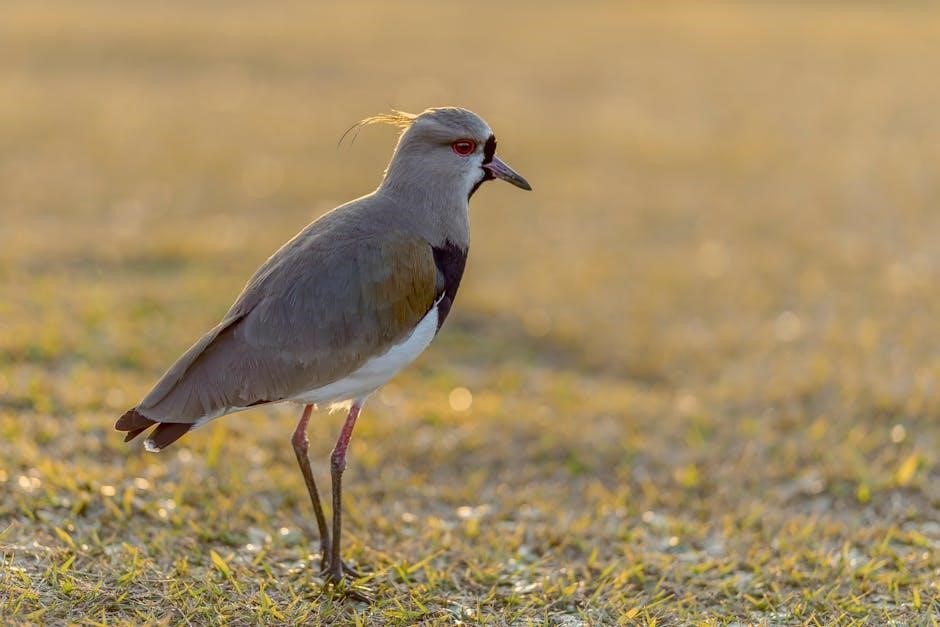Janome My Excel 18W: Overview
The Janome My Excel 18W sewing machine is an electro-mechanical model designed for home use. It offers 18 stitch options, automatic buttonhole creation, and user-friendly features. This machine provides a balance of simplicity and functionality for various sewing projects.
Key Features and Specifications
The Janome My Excel 18W boasts 18 built-in stitches, providing versatility for various sewing needs. It features an automatic buttonhole function, simplifying buttonhole creation. The machine has a horizontal rotary hook system, ensuring smooth and quiet operation. Stitch length and width are adjustable, allowing for customization. A built-in needle threader simplifies the threading process. The machine offers a maximum stitch width of 6.5mm and a maximum stitch length of 4mm; LED lighting illuminates the sewing area. It includes a free arm for sewing cuffs and collars. The machine’s dimensions are approximately 400 x 300 x 150mm, with a weight of around 6kg. It uses standard 130/705H needles.
Intended Use and Capabilities
The Janome My Excel 18W is designed for home sewing enthusiasts and hobbyists. Its capabilities include basic sewing tasks like garment construction, alterations, and mending. The machine can handle various fabric types, from lightweight cotton to denim. Its 18 stitch options allow for decorative stitching and quilting. The automatic buttonhole feature enables users to create professional-looking buttonholes easily. The free arm facilitates sewing cylindrical items. It is suitable for beginners and intermediate sewers. The machine’s features support creative projects, such as crafting, home décor, and personalized gifts. Its robust construction ensures reliable performance for regular use. The My Excel 18W is a versatile tool for a wide range of sewing applications.
Janome My Excel 18W: User Manual and Documentation
The Janome My Excel 18W user manual provides comprehensive guidance on machine operation, maintenance, and troubleshooting. It includes detailed instructions and diagrams for threading, stitch selection, and accessory usage, ensuring optimal performance.
Accessing and Downloading the Manual
To access the Janome My Excel 18W user manual, visit the official Janome website or reputable sewing machine documentation sites. Look for the “Support” or “Downloads” section, then search for the My Excel 18W model. The manual is typically available in PDF format for easy downloading.
Alternatively, check online retailers that sell the Janome My Excel 18W, as they often provide a link to the manual on the product page. Ensure the manual is compatible with your specific model number, which might be 18W or MW3018, to get accurate instructions.
Understanding the Manual’s Contents
The Janome My Excel 18W manual includes essential information for operating and maintaining your sewing machine. It covers threading the machine, bobbin winding and insertion, stitch selection, and adjusting settings like stitch length and width. Pay close attention to safety guidelines to prevent injury or damage.
The manual also provides troubleshooting tips for common issues like thread breakage or skipped stitches. Furthermore, it details the use of included accessories and optional attachments. Understanding these sections ensures proper machine operation, extends its lifespan, and enhances your sewing experience with the Janome My Excel 18W.
Janome My Excel 18W: Basic Operations
Mastering basic operations is crucial for effective use. This includes threading, bobbin work, stitch selection, and setting adjustments. These steps form the foundation for successful sewing projects with the Janome My Excel 18W.
Threading the Machine (Upper and Lower Thread)
Proper threading is essential for avoiding issues such as thread breakage and skipped stitches. For the upper thread, follow the numbered guides on the machine, ensuring the thread passes through the tension disc and take-up lever. Incorrect threading here is a common cause of problems. The bobbin needs winding and then properly inserting into the bobbin case. Be sure the bobbin rotates in the correct direction as indicated in the manual. The lower thread must be drawn up correctly through the needle plate before starting to sew. Always double-check both upper and lower threading before beginning a sewing project to ensure smooth operation and quality results.
Bobbin Winding and Insertion
Winding the bobbin correctly is crucial for balanced stitches. Place the thread spool on the spool pin and follow the thread guide to the bobbin winder spindle. Wind the thread around the bobbin a few times to secure it. Engage the bobbin winder mechanism and start the machine to fill the bobbin evenly. Once full, disengage the winder. To insert the bobbin, open the bobbin case and place the bobbin inside, ensuring it rotates in the correct direction, as indicated by the diagram. Thread the bobbin thread through the tension slot. This precise process will help prevent thread jams;
Selecting Stitches and Adjusting Settings
The Janome My Excel 18W offers 18 different stitches, selectable via a dial on the machine’s front. Refer to the stitch chart for options like straight stitch, zigzag, and decorative patterns. Adjust stitch length and width using dedicated dials to customize each stitch. Proper settings are vital for different fabrics and techniques. Test stitch on scrap fabric before beginning your project. Tension settings should also be adjusted based on thread and fabric, aiming for balanced stitches where the top and bobbin threads meet in the middle of the fabric layers. Incorrect settings can result in poor stitch quality.
Janome My Excel 18W: Maintenance and Troubleshooting
Regular maintenance ensures the Janome My Excel 18W operates smoothly. This includes cleaning lint, oiling moving parts, and addressing common issues like thread breakage or skipped stitches by checking threading and needle condition.
Cleaning and Oiling the Machine
To maintain optimal performance of your Janome My Excel 18W, regular cleaning and oiling are crucial. Begin by unplugging the machine. Use a soft brush or lint brush to remove dust and lint from the bobbin area, feed dogs, and other accessible parts. For stubborn residue, a slightly damp cloth can be used, ensuring all parts are completely dry afterward.
Oiling should be done sparingly on designated oiling points as indicated in the manual. Use sewing machine oil only. After oiling, run the machine on a scrap fabric to remove excess oil. Consistent cleaning and oiling will prolong the life of your machine and ensure smooth operation.
Troubleshooting Common Problems (e.g., thread breakage, skipped stitches)
Experiencing issues like thread breakage or skipped stitches with your Janome My Excel 18W? First, re-thread the upper and lower threads, ensuring correct tension. Check the needle for damage or incorrect insertion. For skipped stitches, try a new needle suitable for your fabric.
Thread breakage can also stem from poor thread quality or incorrect threading path. Ensure the machine is clean from lint. If the fabric is bunching, adjust the presser foot pressure. Consult the manual for specific guidance on resolving these common sewing problems. Persistent issues may require professional servicing to avoid further damage.
Janome My Excel 18W: Accessories and Attachments
The Janome My Excel 18W comes with standard accessories like various presser feet. Optional attachments, such as quilting or buttonhole feet, expand the machine’s capabilities for specialized sewing tasks.
Standard Included Accessories
The Janome My Excel 18W sewing machine typically includes a set of standard accessories to get users started. These usually feature a standard zig-zag foot, essential for general sewing tasks. A zipper foot is included for easy and precise zipper insertion. Buttonhole foot allows for creating automated buttonholes with ease. An overedge foot aids in finishing fabric edges, preventing fraying. Also included are bobbins, needles, a seam ripper, and a screwdriver for basic maintenance. These accessories offer a foundation for a variety of sewing projects, making the Janome My Excel 18W a versatile tool.
Optional Accessories and Their Uses
For the Janome My Excel 18W, various optional accessories expand its capabilities. A walking foot ensures even feeding of multiple fabric layers, useful for quilting. A quilting foot provides better stitch control. A blind hem foot creates nearly invisible hems on garments. Different presser feet for decorative stitches add creative options. Specialty needles like ballpoint needles for knits or denim needles for heavy fabrics are available. Extension tables offer larger work surfaces for bigger projects. These accessories enhance precision and versatility, allowing users to tackle more complex and creative sewing tasks with their Janome My Excel 18W.
Janome My Excel 18W: Advanced Techniques and Tips
Exploring advanced techniques with the Janome My Excel 18W opens up creative possibilities. Mastering specialty stitches and buttonhole creation enhances project quality. Proper fabric selection and needle choice are essential.
Using Specialty Stitches
The Janome My Excel 18W offers a variety of specialty stitches that can add unique decorative elements to your sewing projects. To effectively utilize these stitches, consult the machine’s manual for specific settings and recommended applications. Experiment with different thread types and colors to achieve varied visual effects. Stabilizing fabrics appropriately ensures the stitches lay flat and prevent puckering. Adjusting the stitch length and width allows for customization based on the project’s requirements. Practice on scrap fabric before applying specialty stitches to your final project. Consider using these stitches for decorative borders, embellishments, or adding texture to garments and home décor items. Familiarize yourself with each stitch to unlock the full potential of the Janome My Excel 18W.
Buttonhole Creation
Creating buttonholes with the Janome My Excel 18W is simplified by its automatic buttonhole feature. The machine’s manual provides detailed instructions on using the buttonhole foot and adjusting settings for different button sizes. Measure your button to ensure accurate sizing using the measuring device on the buttonhole foot. Stabilize the fabric with interfacing to prevent stretching or distortion during sewing. Practice creating buttonholes on scrap fabric to perfect your technique. Follow the steps outlined in the manual precisely for consistent results. Adjust the buttonhole density and width to match your fabric type. Carefully cut open the buttonhole using a seam ripper, being cautious not to cut the stitches. With proper technique, the Janome My Excel 18W makes buttonhole creation efficient.









